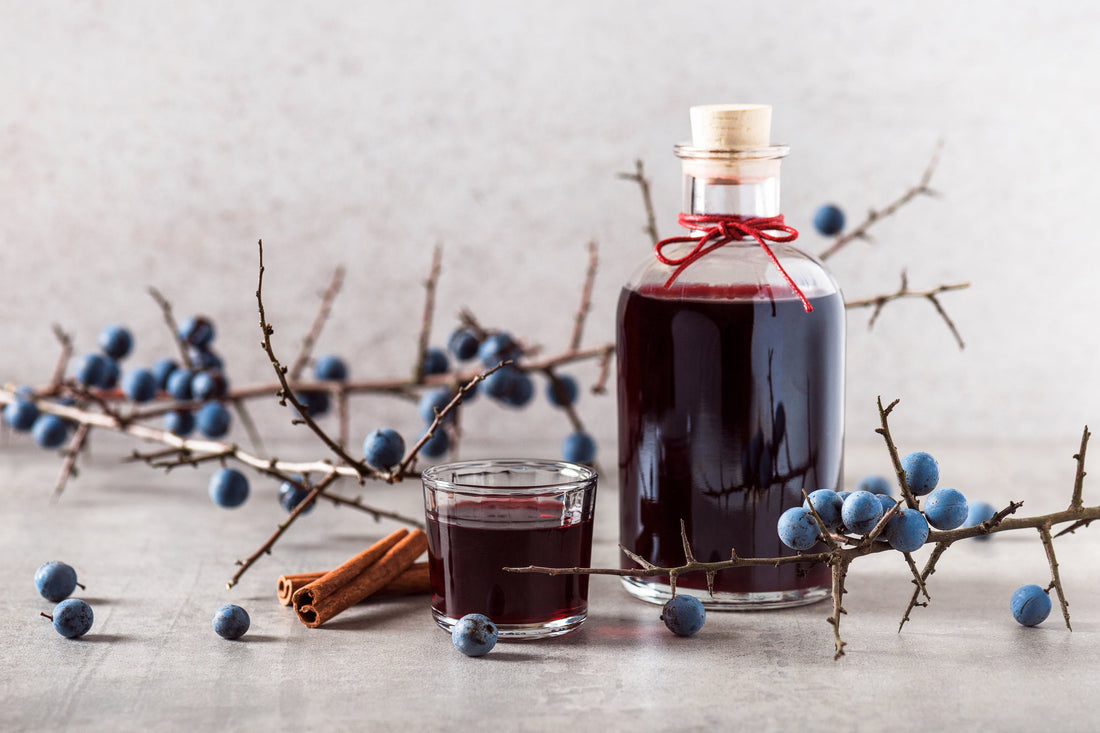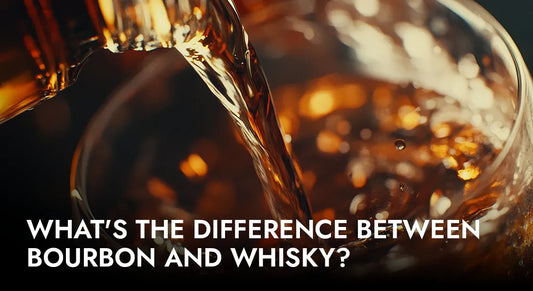
What is Sloe Gin?
Long a traditional English staple for autumn and winter, the spirit has enjoyed a recent revival in bars around the world. Craft distilleries are producing sloe gins and inventive sloe gin cocktails are becoming well-known. But few know of its long-storied history that led to its staying power.
A History of Sloe Gin
Sloe berries are found across thorny bushes across Europe, including in hedgerows in England. Hedgerows were common to distinguish individual farmsteads and properties under the British Enclosure Acts in the 17th century.
If sloe berries were eaten on their own, they taste rather unpleasant and astringent. Some enterprising English growers, however, discovered that harvesting sloe berries after the first frost mellows their inherent sourness. Preserving them lends a rich raisin-like flavor. Gin was perfect because of all the warm botanicals like juniper and coriander seed. With the addition of sugar to sloe gin, it makes a beautifully sweet, yet tart nutty gin after a long steep with sloe berries.
Early sloe gins were thought of as cheap due to their low quality and overconsumption by the lower classes. In the 19th century, gin distilleries started packaging sloe gin and they became an acceptable holiday drink in the UK, and still are to this day.
How Sloe Gin is Made
Sloe gin is generally regarded as a liqueur rather than a gin because of its sweetness. Every sloe berry is picked and then added to sugar and gin in a large container. The jar is mixed, sealed and stored in a cool, dark area until at least three months have passed. After this period, the gin reveals a deep ruby red colour.
While it’s well known in the UK today and was popular in the U.S. for some time in the 20th century, sloe gin remained elusive for years. That may be chalked up to its commercial branding and industrial manufacturing. Many U.S. Distilleries have avoided properly manufacturing sloe gin, rendering it into a cloying imitation. Commercial sloe gin – recognisable with their plastic bottles that show a lack of ingredient transparency - consist mainly of sugar and artificial flavours. These sloe gins are extremely sweet and have a harsh, burning aftertaste. You can buy gin online to compare traditional and sloe-infused styles.
High-quality sloe gin tastes plummy and has an earthy, raisin-like flavor with notes of almonds. Plymouth Gin, an English gin distillery that is commonly sold, was one of the first to return to the original recipe. Instead of sparkling red, the spirit of Plymouth is dark purple.
The Differences between Gin and Sloe Gin
With so many flavoured spirits on the market, one can make the mistake that sloe gin is merely a flavoured version of the gin. However, when looking at a bottle of sloe gin versus a bottle of traditional gin, it's easy to find certain variations. Try a gin taster pack
to sample classic and fruit-infused varieties.
Gin is traditionally distilled, but sloe gin is distinctive. The key distinctions between gin and sloe gin are:
- Gin is a spirit and sloe gin is a liqueur.
- Gin is transparent and the colour of sloe gin is bright red or purple.
- Gin's principal ingredient is juniper; sloe gin's main ingredients are purple sloe berries.
- Gin has higher alcoholic content than sloe gin and is less sweet.
- Gin is created by various conventional distillation methods. The infusion of sugar and purple sloe berries into gin make sloe gin.
How to Drink Sloe Gin
Sloe Gin Cocktails
The way people drink sloe gin varies. In England, it's known as a winter holiday drink that is often paired with Champagne. Many upper-class and aristocratic people in England traditionally drink sloe gin before hunting.
However, the use of sloe gin in cocktails is more popular. Sloe gin’s liqueur status and deep fruity flavours make it versatile enough to be used with almost anything and can be enjoyed any time of the year.
Some classic sloe gin cocktails are still around to this day. Created in the early 20th century, the Sloe Gin Fizz is the most well-known cocktail. With soda, lemon, and simple syrup, the fizz warms up the cold-weather atmosphere of the dark, plummy liqueur. Another 20th century cocktail, the Charlie Chaplin, features sloe gin as the star.
With its recent revival, sloe gin has reinvigorated the cocktail game. Substitute sloe gin in classic gin cocktails like a Negroni or French 75. Sloe gins are popular to mix with tonic, soda or lemonade. If you want to add something more special to sloe gin, the recently rediscovered Modern Cocktail combines sloe gin and Scotch whisky, among other ingredients.
Other Ways to Drink Sloe Gin
Here are some ways to drink sloe gin at home:
Iced
Sloe gin also sips well chilled with ice if you’re drinking cold cocktails like a sloe gin and tonic. You can also add a shot to a glass of Prosecco or Champagne.
Neat or Warm
Serve sloe gin in a small to a medium glass or a glass with a handle if you plan to drink sloe gin neat or warm.
Garnish
Sloe gin tastes fantastic with other berries from prickly bushes such as blackberries, spices like cinnamon, or fresh herbs, for instance. They all round out the almond and cherry notes found in sloe gin.













